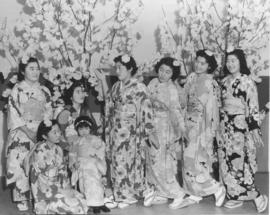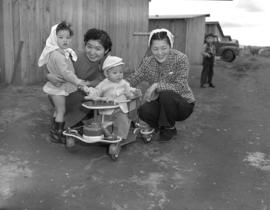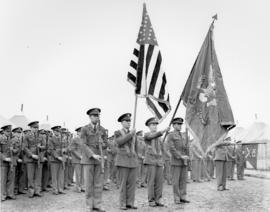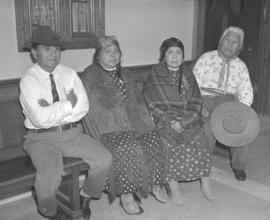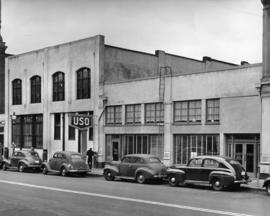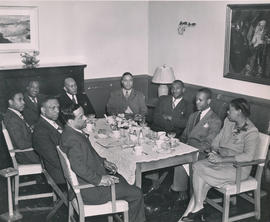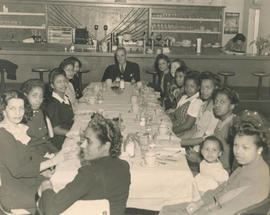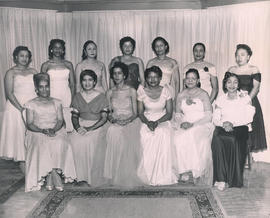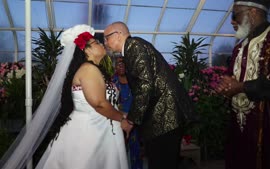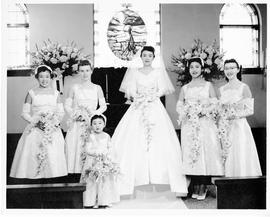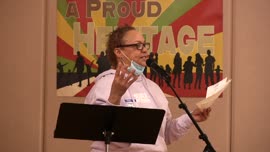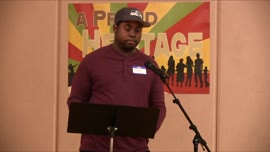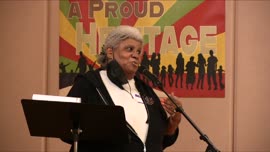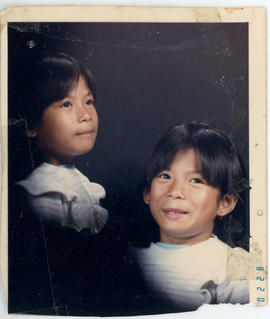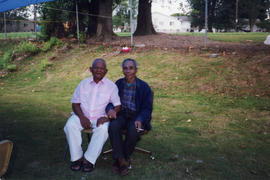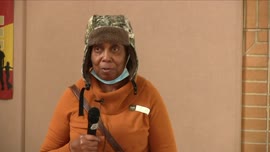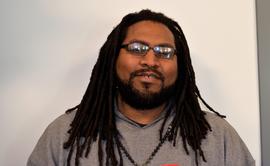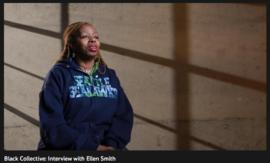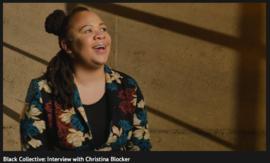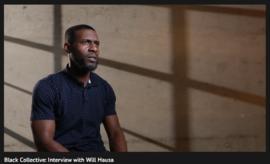- Item
- 1938-11-10
Part of Richards Studio Photographs
Three Japanese American women and a child watch a team of four women perform a traditional Japanese dance during a dress rehearsal for the Japanese-American Citizen's League's second annual carnival and bazaar, to be held on November 12, 1938 at the Fife High School. The group is attired in kimonos and posed in front of a background of cherry blossoms. The watching group on the left is composed of Haruko Yaguchi (standing), Fugiye Sasaki (seated), Lillian Mizukami (kneeling) and three year old Arlene Sakahara. The dancers are, left to right, Betty Sasaki, Dorothy Norisada, Miyo Yoshida and Amy Marumoto. (T. Times 11/10/1938, pg. 20; 11/14/1938, pg. 3)
Kimonos; Japanese-American Citizen's League (Tacoma); Japanese Americans--Fife--1930-1940; Ceremonial dancers; Japanese Americans--Dance;
